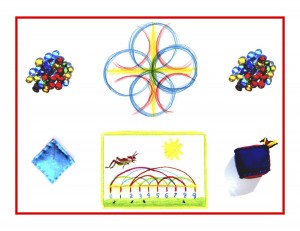Day 148
For one year, 365 days, this blog will address the Common Core Standards from the perspective of creating an alternate, ambient learning environment for math. Ambient is defined as “existing or present on all sides, an all-encompassing atmosphere.” And ambient music is defined as: “Quiet and relaxing with melodies that repeat many times.
Why ambient? A math teaching style that’s whole and all encompassing, with themes that repeat many times through the years, is most likely to be effective and successful. Today’s post will begin reviewing the Common Core ELA standards, moving through them more quickly than the Common Core math standards. The standards will be posted in groups of three to five in blue, followed by their ambient counterparts.
English Language Arts Standards > Reading: Informational Text > Grade 2
Craft and Structure:
CCSS.ELA-LITERACY.RI.2.4
Determine the meaning of words and phrases in a text relevant to a grade 2 topic or subject area.
CCSS.ELA-LITERACY.RI.2.5
Know and use various text features (e.g., captions, bold print, subheadings, glossaries, indexes, electronic menus,icons) to locate key facts or information in a text efficiently.
CCSS.ELA-LITERACY.RI.2.6
Identify the main purpose of a text, including what the author wants to answer, explain, or describe.
Exploring literature that is not relevant to grade level is one of the rock-solid advantages of a Waldorf education. Trying to squeeze adult content (which most informational text by its nature is) into a watered-down version just to make it possible for an 8 year old to struggle through is mistaken. Why put the cart before the horse? Why go through all the steps to teach reading in a dissected way when it can grow naturally, as an offshoot of a love of story. Story and myth constitute the proper diet for the young child. Time enough for the facts, later.
Doesn’t this list of text features imply computer use? Real paper doesn’t seem to be read anymore. We can get anything we need off our screens, large or small. Screen use has been proven to be detrimental (even physically) under the age of reason, which most developmental research has set at 11-12. Reading efficiently and second graders are not in the same ball park, i.e., yesterday’s image of an 8 year old thoughtfully reading the morning paper. In the Waldorf system, second graders make their own textbooks/main lesson books by illustrating each day’s lesson (usually in tandem with the day before’s story) and writing the content of the lesson on the facing page. First graders block print in all caps, second graders switch to upper and lower case letters, and third graders learn to write in cursive. The text features listed in this standard do appear in the children’s writing, but are not abstractly taught at this level.
The main purpose of a text is intuitively grasped as the story unfolds and is retold the next day. Elements of literature are valuable learning tools, but developmentally inappropriate when taught abstractly at this grade level. “Answer, explain, or describe” may be a better fit with informational text than storytelling, but can be found intricately woven into the story, and as such can build a sturdy foundation for reading informational text later on.
Knowledge ensues in an environment dedicated to imaginative, creative knowing, where student and teacher alike surrender to the ensuing of knowledge as a worthy goal. Tune in tomorrow to continue with the Common Core ELA standards and their ambient counterparts.












